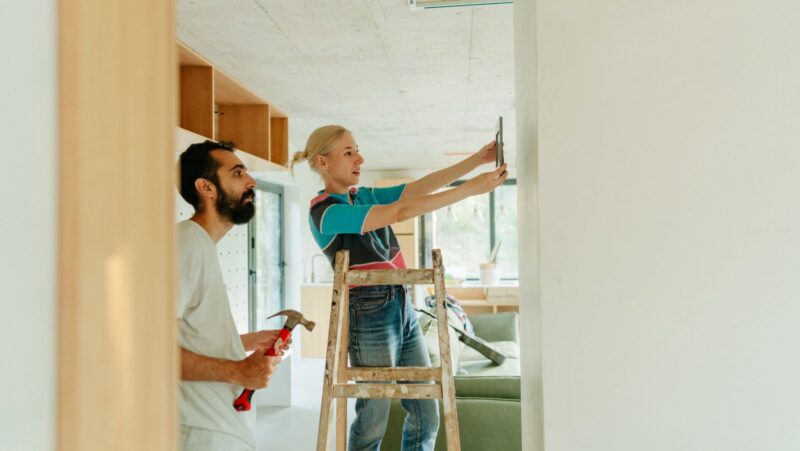
Living with mold can be a nightmare. Beyond the unsightly appearance and musty smell, mold poses serious health risks and can wreak havoc on your overall well-being. Whether it’s black mold lurking in damp corners or hidden mold behind walls, the effects can be detrimental to physical and mental health. However, the road to recovery is possible with the right approach. In this guide, we’ll explore steps to restore your well-being after living with mold, addressing both the physical and emotional aspects of recovery.
Healthy Eating After Mold Exposure
It’s crucial to focus on nourishing your body with healthy food choices. Mold exposure can compromise immune function and exacerbate existing health conditions, making it essential to support your body’s natural defenses through proper nutrition. When looking for foods that kill mold in the body, you can Incorporate a variety of fresh fruits, vegetables, lean proteins, and whole grains into your diet to provide essential vitamins, minerals, and antioxidants. By fueling your body with nutritious foods, you can support your overall well-being and enhance your resilience against future health challenges.
Understanding the Impact of Mold
It’s important to understand the profound impact mold can have on your health. Mold exposure isn’t just a matter of an unsightly appearance or a musty odor; it can trigger a range of serious health issues. From respiratory problems like coughing and wheezing to allergies and skin irritation, the effects can be widespread. Moreover, prolonged mold exposure has been linked to more severe conditions such as asthma, chronic sinus infections, and fungal infections, which can significantly impact daily life and well-being.
Beyond physical health concerns, mold exposure can also take a toll on mental health, contributing to anxiety, depression, and cognitive difficulties. Thus, it’s essential to address mold exposure promptly and thoroughly to safeguard both your physical and mental well-being.
Assessing the Damage
The first step in restoring your well-being after living with mold is to assess the extent of the damage. Conduct a thorough inspection of your living space to identify areas affected by mold growth.

Pay close attention to areas with high moisture levels, such as bathrooms, kitchens, basements, and areas prone to water leaks. Look for visible signs of mold, including discoloration, water stains, and musty odors. Additionally, consider seeking professional assistance for a comprehensive mold inspection, especially if you suspect hidden mold behind walls or in ventilation systems.
Addressing Physical Health Concerns
Once you’ve identified and addressed the source of mold growth, it’s essential to prioritize your physical health. If you’ve experienced any symptoms related to mold exposure, consult with a healthcare professional for proper diagnosis and treatment. Depending on the severity of your symptoms, treatment may involve medication for respiratory issues, allergy management, or referral to specialists for further evaluation.
In addition to medical treatment, focus on creating a clean and healthy living environment. Thoroughly clean and disinfect areas affected by mold, using appropriate cleaning products and protective gear. Replace or repair any damaged materials, such as drywall, insulation, or flooring, to prevent mold recurrence. Implement measures to control moisture levels in your home, such as using dehumidifiers, improving ventilation, and promptly addressing any water leaks or plumbing issues.
Prioritizing Emotional Well-Being
Dealing with the aftermath of living with mold can take a toll on your emotional well-being. It’s normal to feel overwhelmed, anxious, or frustrated during the restoration process. Therefore, it’s essential to prioritize self-care and seek support from loved ones or mental health professionals.
Practice stress-reduction techniques such as mindfulness, meditation, or deep breathing exercises to help alleviate anxiety and promote relaxation. Engage in activities that bring you joy and relaxation, whether it’s spending time outdoors, pursuing hobbies, or connecting with friends and family. If you find yourself struggling to cope with the emotional impact of mold exposure, consider seeking therapy or counseling to explore your feelings and develop coping strategies.
Creating a Healthy Living Environment
Prevention is key to maintaining a mold-free living environment and safeguarding your well-being in the long run. Incorporate proactive measures to prevent mold growth and maintain a healthy indoor environment. Regularly clean and ventilate moisture-prone areas, such as bathrooms and kitchens. Use mold-resistant products and materials when renovating or remodeling your home. Keep indoor humidity below 60% to discourage mold growth, especially in humid climates or rainy seasons.

Living with mold can have detrimental effects on both physical and emotional well-being, but restoration is possible with the right approach. By addressing physical health concerns, prioritizing emotional well-being, and creating a healthy living environment, you can restore your well-being and regain peace of mind. Remember to seek professional assistance when needed and prioritize self-care throughout the restoration process. With dedication and perseverance, you can overcome the challenges of living with mold and enjoy a healthier, happier lifestyle.












